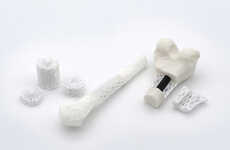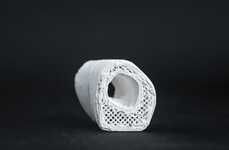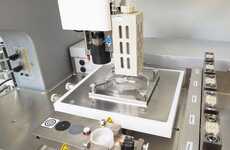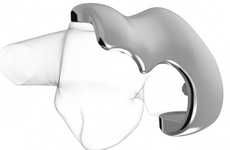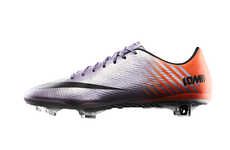
Scientists Use 3D Printing to Create a Replica of a Human Ear
Tia Clarke — February 25, 2013 — Tech
References: cornell.edu & designboom
The world of 3D printing has brought us many innovations from the sublime, like 3D printed wedges to 3D printed sex toys. It's great to see the technology being used for social good such is the case with these 3D printed ears.
Professors at The Cornell Universities Biomedical Engineering department have created 3D printed life-like ears to aid children with born with deformities, cancer sufferers or accident survivors who have lost all of or part of their external ear. Scientists devised a way to create the amazingly accurate artificial organ by using collagen and cartilage from animals.
It’s interesting to see where the future of 3D printing will take us. Here’s hoping there will be a lot more innovations that can improve people’s lives in such a positive way.
Photo Credits: designboom, cornell.edu
Professors at The Cornell Universities Biomedical Engineering department have created 3D printed life-like ears to aid children with born with deformities, cancer sufferers or accident survivors who have lost all of or part of their external ear. Scientists devised a way to create the amazingly accurate artificial organ by using collagen and cartilage from animals.
It’s interesting to see where the future of 3D printing will take us. Here’s hoping there will be a lot more innovations that can improve people’s lives in such a positive way.
Photo Credits: designboom, cornell.edu
Trend Themes
1. Medical 3D Printing - As technology advances, opportunities grow in medical 3D printing as a means of creating organs and prosthetics for those in need.
2. Collaborative Development - Collaborative efforts between scientists and industry experts can lead to breakthroughs in 3D printing technology and its practical applications.
3. Personalized Prosthetics - With the help of 3D printing, more personalized prosthetics can be created to cater to individual patients' needs.
Industry Implications
1. Healthcare - The healthcare industry can harness the potential of 3D printing to create customized prosthetics and implants that are more effective and cost-efficient for patients.
2. Research and Development - The research and development industry can benefit from 3D printing technology to explore novel methods of creating replicas of body parts for study.
3. Manufacturing - Manufacturing is another industry that can utilize 3D printing technology to develop more advanced production techniques for prosthetics and other products requiring individual customization.
4.4
Score
Popularity
Activity
Freshness





